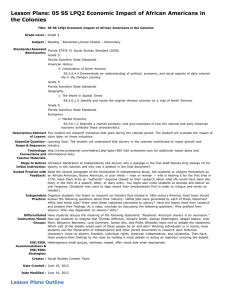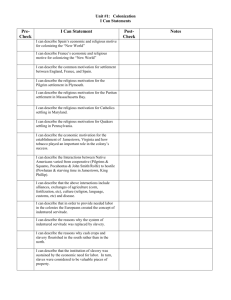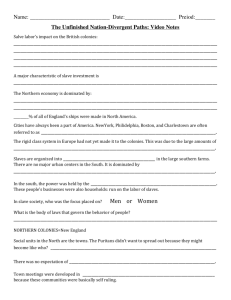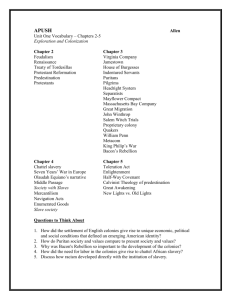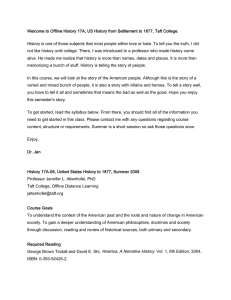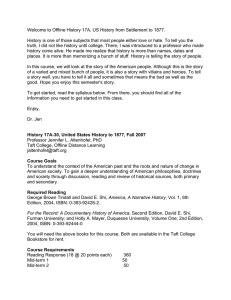Lesson Plans: 05 SS LPQ2 Slavery in the American Colonies
advertisement
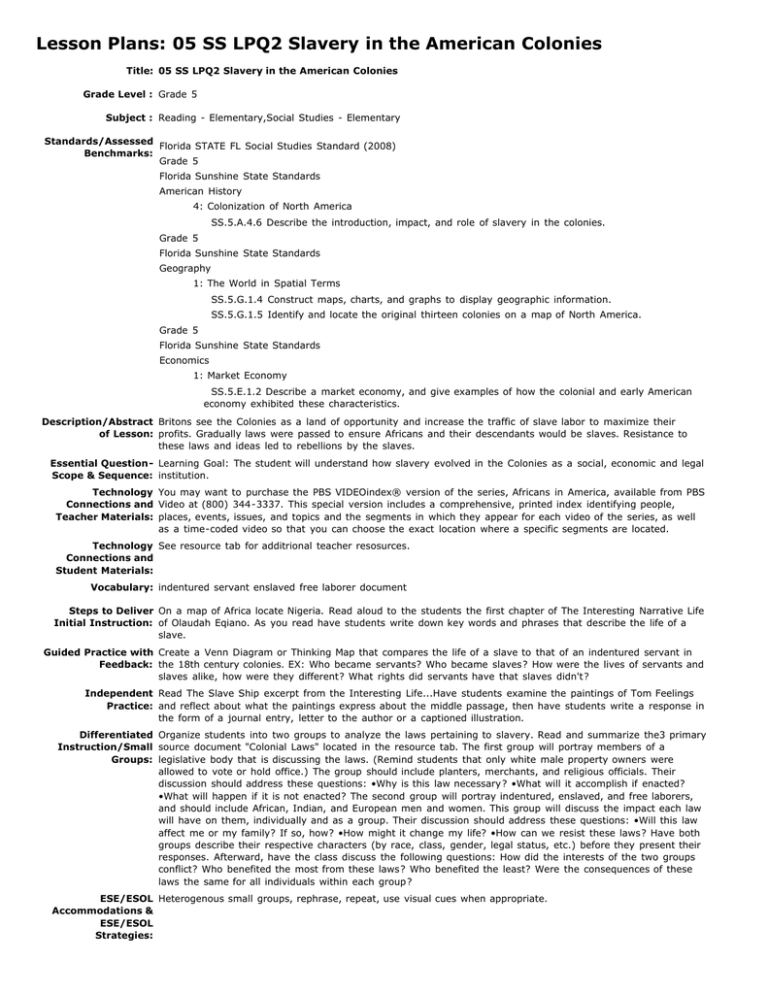
Lesson Plans: 05 SS LPQ2 Slavery in the American Colonies Title: 05 SS LPQ2 Slavery in the American Colonies Grade Level : Grade 5 Subject : Reading - Elementary,Social Studies - Elementary Standards/Assessed Florida STATE FL Social Studies Standard (2008) Benchmarks: Grade 5 Florida Sunshine State Standards American History 4: Colonization of North America SS.5.A.4.6 Describe the introduction, impact, and role of slavery in the colonies. Grade 5 Florida Sunshine State Standards Geography 1: The World in Spatial Terms SS.5.G.1.4 Construct maps, charts, and graphs to display geographic information. SS.5.G.1.5 Identify and locate the original thirteen colonies on a map of North America. Grade 5 Florida Sunshine State Standards Economics 1: Market Economy SS.5.E.1.2 Describe a market economy, and give examples of how the colonial and early American economy exhibited these characteristics. Description/Abstract Britons see the Colonies as a land of opportunity and increase the traffic of slave labor to maximize their of Lesson: profits. Gradually laws were passed to ensure Africans and their descendants would be slaves. Resistance to these laws and ideas led to rebellions by the slaves. Essential Question- Learning Goal: The student will understand how slavery evolved in the Colonies as a social, economic and legal Scope & Sequence: institution. Technology You may want to purchase the PBS VIDEOindex® version of the series, Africans in America, available from PBS Connections and Video at (800) 344-3337. This special version includes a comprehensive, printed index identifying people, Teacher Materials: places, events, issues, and topics and the segments in which they appear for each video of the series, as well as a time-coded video so that you can choose the exact location where a specific segments are located. Technology See resource tab for additrional teacher resosurces. Connections and Student Materials: Vocabulary: indentured servant enslaved free laborer document Steps to Deliver On a map of Africa locate Nigeria. Read aloud to the students the first chapter of The Interesting Narrative Life Initial Instruction: of Olaudah Eqiano. As you read have students write down key words and phrases that describe the life of a slave. Guided Practice with Create a Venn Diagram or Thinking Map that compares the life of a slave to that of an indentured servant in Feedback: the 18th century colonies. EX: Who became servants? Who became slaves? How were the lives of servants and slaves alike, how were they different? What rights did servants have that slaves didn't? Independent Read The Slave Ship excerpt from the Interesting Life...Have students examine the paintings of Tom Feelings Practice: and reflect about what the paintings express about the middle passage, then have students write a response in the form of a journal entry, letter to the author or a captioned illustration. Differentiated Organize students into two groups to analyze the laws pertaining to slavery. Read and summarize the3 primary Instruction/Small source document "Colonial Laws" located in the resource tab. The first group will portray members of a Groups: legislative body that is discussing the laws. (Remind students that only white male property owners were allowed to vote or hold office.) The group should include planters, merchants, and religious officials. Their discussion should address these questions: •Why is this law necessary? •What will it accomplish if enacted? •What will happen if it is not enacted? The second group will portray indentured, enslaved, and free laborers, and should include African, Indian, and European men and women. This group will discuss the impact each law will have on them, individually and as a group. Their discussion should address these questions: •Will this law affect me or my family? If so, how? •How might it change my life? •How can we resist these laws? Have both groups describe their respective characters (by race, class, gender, legal status, etc.) before they present their responses. Afterward, have the class discuss the following questions: How did the interests of the two groups conflict? Who benefited the most from these laws? Who benefited the least? Were the consequences of these laws the same for all individuals within each group? ESE/ESOL Heterogenous small groups, rephrase, repeat, use visual cues when appropriate. Accommodations & ESE/ESOL Strategies: Creator : Social Studies Content Team Date Created : June 18, 2012 Date Modified : June 19, 2012 Lesson Plans Outline Outline Title Duration Resources: Slavery in the American Colonies Comments


